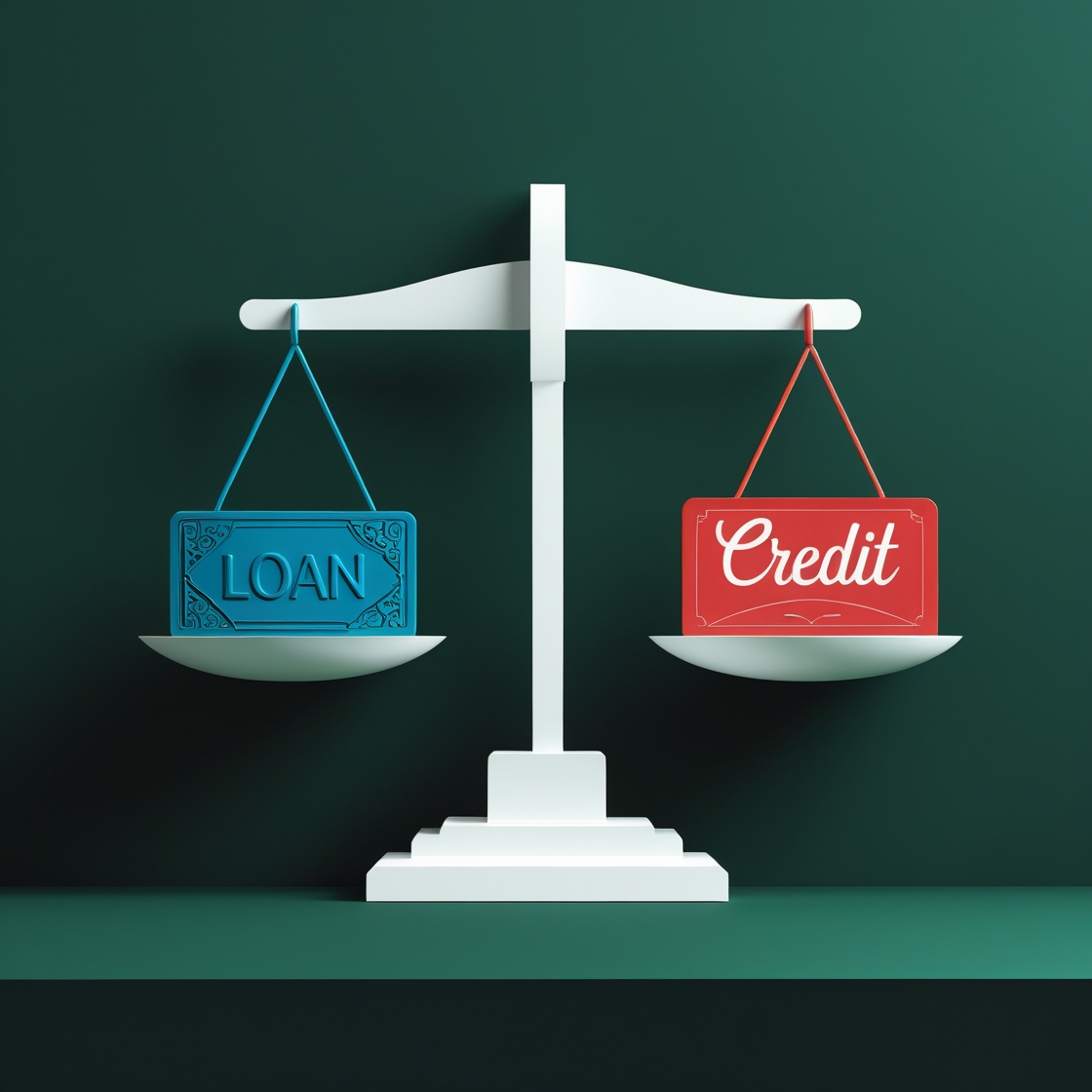The main difference between a loan and credit is the way the funds are disbursed. A loan provides all of the money requested at the same time; however, in the case of credit, you get an amount that can be used as needed. Credit funds are available to be borrowed all at once, in portions, or none at all.
All in all, a loan and credit are two different types of financing. They are both banking products that provide capital to borrowers.

A loan is a financial product that you can borrow from a bank, financial institution, or any other lender. You get the full amount at one time, and you need to pay it back with the interest in fixed installments, called EMIs. There is a specific time frame for returning the amount.
Here are some important characteristics of a loan -
They can be short-term or long-term, between 3 months to 30 years
The EMIs include the interest and the principal amount
The interest rates can be either floating or fixed
Once you have paid off all the EMIs, you don’t have any more funds available unless you take a new loan
A credit is a more adaptable type of financing that allows you to access the amount of money loaned based on your needs at any given time.
The credit establishes a maximum amount of money that can be used in part or in full. You may use the entire amount of money provided, a portion of it, or none at all.
Let us take a look at the main characteristics of a credit that set it apart from a loan -
Higher interest rates and lower amounts as compared to loans
Have a higher and more direct impact on credit scores
No interest needs to be paid unless you withdraw or use an amount from the approved limit
Although interest is only paid on the amount used, a minimum fee may be charged on the undrawn balance
More money will become available as the money is returned, as long as the limit is not exceeded
When you have an approved line of credit, the bank or financial institution advances them a set credit limit that they can use in full or in part over and over again. This converts it to a revolving credit limit, which can be used whenever needed.
Here is an example to understand it better -
Suppose you have a credit line with a Rs.10,000 limit. You can use some or all of it to meet your needs. If you have a balance of Rs.5,000 balance, you can use the remaining Rs.5,000 whenever you want. If you pay off the Rs.5,000 that you used, you will have access to the entire Rs.10,000 again.
Loans and credit can be either secured or unsecured. Let’s learn how they differ.
You need to use some security or collateral to apply for such a loan or credit. The assets can be gold, stocks, land, property, vehicles, etc. Here are some characteristics of a secured loan or credit -
Lower interest rates
Higher loan amounts
Longer tenures
Can be availed even with low credit scores
Easier to avail
If you fail to repay it, the lender has the right to sell the asset to pay for the loss
You do not need any collateral or asset to avail of an unsecured loan or credit. Here are some factors that set an unsecured loan apart from a secured one -
Higher interest rates
Lower loan amounts
Shorter tenures
More complex eligibility criteria
A good credit score is required
Is a loan or a credit better for you? The answer depends on your requirements. However, here are some things to consider which might help you make the choice -
Both have an impact on your credit score. Having both types in your credit mix might even be better for your credit score.
You have to pay interest in both cases, but how they are calculated varies.
Loans are better for large, one-time spending. However, credit lines provide flexibility for smaller expenses.
A line of credit is a much more flexible way to borrow funds for smaller, ongoing expenses. This also implies that a line of credit may be a better option for emergency funds. If you don't borrow from your line of credit, you won't have to pay interest, but it's there if you need it.
However, in the case of businesses, a line of credit can be utilized as working capital. Whereas loans can be used to buy fixed assets, like equipment, and real estate.
We hope after learning the difference between a term loan and cash credit, you will be able to decide which of these products is the right choice for you! You can now get both of these products through the Moneyview digital lending app. To know more, please visit our website or download the app.
Need Quick Cash?
Best Personal Loan Resources
Personal Loan Types and Comparisons
Personal Loan Insights and Guides
Personal Loan in Top Cities
Disclaimer
The starting interest rate depends on factors such as credit history, financial obligations, specific lender's criteria and Terms and conditions. Moneyview is a digital lending platform; all loans are evaluated and disbursed by our lending partners, who are registered as Non-Banking Financial Companies or Banks with the Reserve Bank of India.
This article is for informational purposes only and does not constitute financial or legal advice. Always consult with your financial advisor for specific guidance.
Was this information useful?